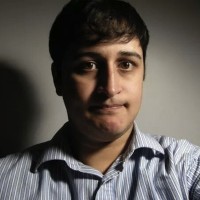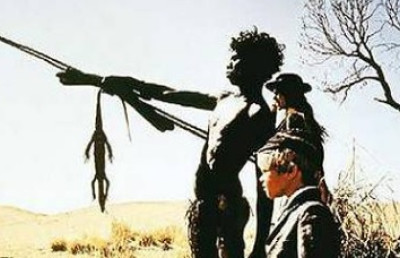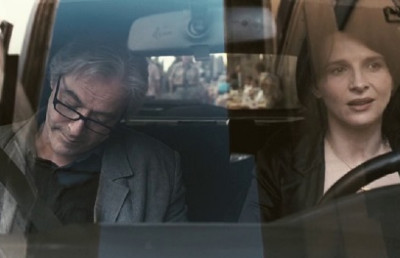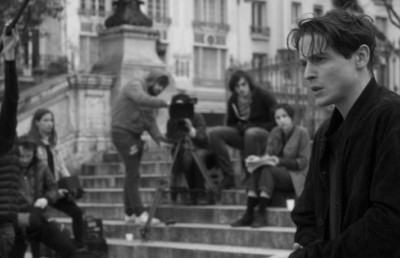Listening to Voices: TIFF 2023
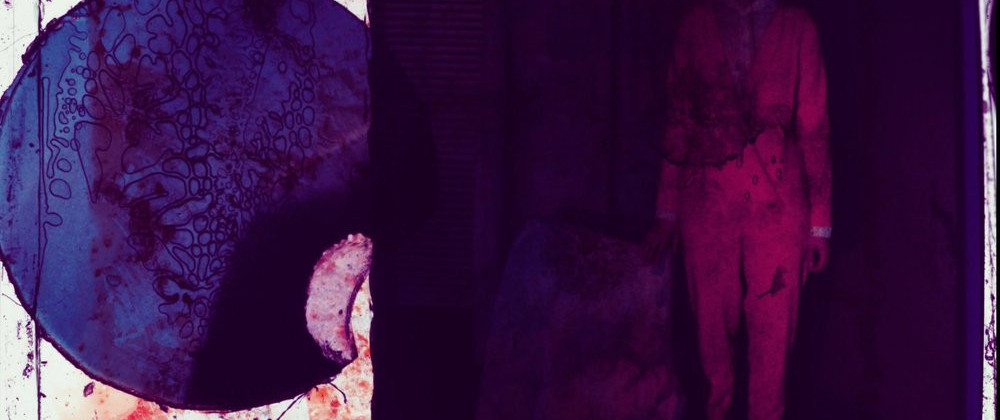
We Don't Talk Like We Used To (image source, Joshua Gen Solondz)
Godard and His Public
When he was alive, Jean-Luc Godard was often accused of being indifferent to his audience (if not actively hostile), especially after moving from Paris to Rolle in 1978, which some have interpreted as a retreat from the contemporary world. (In a 1995 review, Jonathan Rosenbaum described two of his late works, Allemagne année 90 neuf zéro [1991] and JLG/JLG, autoportrait de décembre [1995] as “Godard talking to himself.”) However, when he died last September, Libération quoted a source close to Godard as saying he wanted people to know he ended his life deliberately (Chrisafis 2022). He also left detailed instructions for one last work, Film annonce du film qui n’existera jamais: “Drôles de guerres”, which have been carried out posthumously by Fabrice Aragno, Jean-Paul Battagia, and Nicole Brenez. Both of these facts suggest that, even at the end of his life, Godard was acutely conscious of his public. To be sure, Godard was an uncommonly combative filmmaker, but implicit in the concept of combat is some kind of exchange. By making comprehension difficult for the spectator, Godard’s films solicit their creative participation.
As one would expect from Godard, Film annonce is not a trailer in any conventional sense. For one thing, it contains no footage from the film Godard was working on prior to his death. (Presumably, the project never reached the shooting stage.) Instead, Film annonce consists primarily of static shots of what appears to be Godard’s sketchbook, in which various found images—paintings, photographs, screen grabs from Godard’s video series Histoire(s) du cinéma (1988-1998)—and fragments of texts have been artfully arranged in different geometric configurations on white backgrounds, often accompanied by cryptic handwritten annotations. These shots are numbered sequentially like the pages of a book, though I for one cannot deduce any organizing principle governing the sequencing of the images. The soundtrack alternates between complete silence and bursts of sound (fragments of unattributed speech and classical music), thereby resensitizing the viewer to both. (One abrupt musical cue hit me like a gunshot.) The only moving images are a few brief clips from Godard’s Notre musique (2004), and the film ends with an audio clip from the same movie, in which the Israeli heroine explains that she came to Sarajevo because it was a place where reconciliation seemed possible. In the film’s longest audio clip, an extremely frail-sounding Godard discusses his interest in adapting a novel by the Belgian writer Charles Pilsnier, who was excommunicated from the Communist Party in the 1930s for being a Trotskyist. By the end of the film, the spectator does not have a much better sense of what Drôles de guerres would have been like had Godard lived to complete it than they had at the beginning, but approached as a standalone work, Film annonce can be enjoyed for its artful juxtapositions of sound, image, and text, both within the individual shots and between them.
In the absence of any clear organizing principle (narrative or otherwise), the spectator’s primary task is to try to figure out how these sounds, images, and words fit together. The idea of a sketchbook with numbered pages and an unrealized film project provide a baseline of coherence, which the spectator uses as a starting point for a more open-ended process of hypothesis testing. Furthermore, by incorporating clips and stills from Godard’s earlier films and videos, the film cues the spectator to situate the unrealized Drôles de guerres within a series of works by Godard reflecting on the failure of cinema to confront the horrors of the twentieth century. (Significantly, Pilsnier’s 1937 novel Faux passeports was an indictment of Stalinism.) Nevertheless, due to the time constraints imposed on the spectator by the editing, the task of teasing out connections among the film’s heterogeneous elements is still extremely difficult: one barely has time to register the literal meaning of an image or phrase before the film snatches it away. Far from being indifferent to his public, Godard seems to have known precisely how much information he needed to give to the spectator and how much to leave to their imagination.
Something Horizontal
Blake Williams’ earlier 3D films Something Vertical (2015), PROTOTYPE (2017), and 2008 (2019) are all examples of what James Peterson has termed the poetic strain of avant-garde cinema (1994: chapter 3). Indeed, the title Something Vertical is an homage to Maya Deren, who in a 1953 symposium contrasted the “vertical” investigations of poetry with the “horizontal” development of drama. For Deren, poetry is ultimately concerned “not with what is occurring but with what it feels like and what it means” (quoted in “Poetry” 2000: 174). Accordingly, Williams’ earlier films make it difficult to perceive their overall forms, so that the spectator shifts their attention from the films’ underlying structures to their surface details. (My memory of watching Something Vertical at TIFF eight years ago is quite literally a blur—a spastic, headache-inducing blur of nearly abstract 3D images.) What’s surprising then about Williams’ latest film, Laberint sequences, is that it has a clear, albeit open-ended, permutational structure more akin to the films of Hollis Frampton than the cine-poems of Deren and Stan Brakhage. Indeed, the film’s structure was immediately apparent to me even though I missed the beginning of the film while waiting in the festival rush line.
As the title suggests, Laberint sequences is divided into four clearly marked segments, each beginning with a still photograph from the late nineteenth or early twentieth century and ending with one second of black leader accompanied by a single beep on the soundtrack. The first segment consists of a series of shots of the Parc del Laberint d’Horta in Barcelona. According to the city of Barcelona’s website, the park was originally designed in a neoclassical idiom, “with a slightly Italian look,” but “later adopted a more romantic style” (“Parc” n.d.). The initial shots of this segment, filmed with a static camera, have a contemplative rhythm, but as the film moves deeper into the park’s hedge maze, Williams introduces horizontal pans that seem to move quicker and quicker as the length of each shot steadily decreases, inducing in the spectator a growing feeling of agitation. The film’s second segment shows essentially the same thing again but with more or less subtle variations: e.g., a fountain framed dead centre in the first segment is framed off-centre here, and at the very end of the segment, the frame appears to recede into a black void, as if the speed of the panning and cutting had knocked the image off balance. The third and fourth segments introduce even stronger contrasts: in the third, we see for the first time aerial views of the park filmed from a cable car and interpolated clips from William Cameron Menzies’ The Maze (1953), a gothic horror film shot in 3D that uses the park’s hedge maze as a location, while the fourth contains no contemporary shots of the park whatsoever. Instead, we see the actor Deragh Campbell sitting at a laptop in a dark room watching clips from The Maze and repeating a single line of dialogue into a visible microphone. The film ends with flickering, negativized images of The Maze superimposed on top of one another. But even as it steadily introduces more “verticality”—thereby mirroring the park’s romantic makeover—the film still contains it within a rigorous horizontal structure.
Local Color
In contrast, Joshua Gen Solondz’s We Don’t Talk Like We Used To is a clear-cut example of poetic cinema, privileging sensuous detail at the expense of overall coherence. Shot over six years in several different countries on a variety of film stocks (16 and 35mm, black-and-white and colour), the film juxtaposes an assortment of images that have no self-evident connection to one another. On the one hand, there are shots of individuals and couples in domestic and natural settings wearing different kinds of masks (medical masks, balaclavas, latex sex masks, and at one point, a plastic bag), while on the other, there are shots of the ferry from Hong Kong to Macao and of white expats milling about at the Hong Kong Jockey Club, over which Gen Solondz superimposes caustic hand-painted intertitles (e.g., “The air is thick with poison”). One of the film’s most striking sequences is a stuttered montage alternating rapidly between two different images of a hooded figure putting on and taking off a medical mask. In one image, the figure is framed in close-up in front of a dingy background; in the other, the figure is framed in medium shot with a glaring green light visible over their shoulder. Gradually, the latter image zooms in to a close-up, creating a near graphic match with the first image except for the background and the green light, which seems to flicker on and off. At the same time, the steady rhythm of the editing is underscored by the soundtrack, which alternates between total silence and a harsh grating sound. The juxtaposition of two broadly similar images is far more jarring than total discontinuity, as the spectator perceives the cut not as an absolute break separating two distinct images but as a disturbing fissure within an otherwise continuous image.
Unlike Gen Solondz’s film, Radu Jude’s Do Not Expect Too Much from the End of the World (Nu astepta prea mult de la sfârsitul lumii) has a continuous narrative, but it is little more than a clothesline for a series of stray observations about contemporary Romanian society. The first part of the film, “Angela—A Dialogue Conversation with a 1981 Film” (which runs close to two hours), follows an overworked production assistant (Ilinca Manolache) as she drives around Bucharest in a black SUV auditioning injured workers for an industrial film on workplace safety while running various other errands and producing content for social media. Jude intercuts this story (filmed mainly in grainy black-and-white) with clips from Lucien Bratu’s Angela Moves On (Angela merge mai departe, 1981), an upbeat drama in colour about a female taxi driver (Dorina Lazar), though the rationale for the comparison keeps changing. At one point, Jude uses optical printing techniques to highlight the stares of male pedestrians looking at Lazar in 1981 (apparently unaware they are being filmed) so as to compare their behaviour with the more vocal misogyny of male drivers in the present, while later, images of the romance between the taxi driver and a male passenger (László Miske, whose Hungarian identity was suppressed in the credits of Angela Moves On) stand in for a story told in the present by a retiree (also named Angela) about the courtship between her and her Hungarian husband. The film’s second part, “Ovidu,” consists of just two shots, both filmed from the same camera position, of an injured worker (Ovidu Pîrsan) and his family posing in front of the factory gate where the worker was paralyzed in an accident while members of a film crew bicker and talk shit off camera. Individual scenes are very funny—there is a freestanding sequence in which the production assistant visits the set of a schlock science fiction movie being directed by Dr. Uwe Boll (playing himself) and convinces him to appear in a video for social media where he brags about beating up one of his critics—but at 163 minutes, the film has a tendency to repeat itself. It is funny the first time the production assistant makes a video parodying Andrew Tate—the misogynist influencer who was recently arrested in Romania on charges of rape and human trafficking—but not so much the sixth.
Untimely Meditations
As literary criticism, Paul B. Preciado’s Orlando, ma biographie politique is plainly a travesty. Not only does it reduce Virginia Woolf’s Orlando: A Biography (1928) to its subject matter, but it misrepresents the novel by characterizing its protagonist without qualification as a trans character, even though Orlando—who lives for two hundred years as a man and then two hundred years as a woman—does not experience gender dysphoria either as a male or as a female. At times, Preciado seems to forget that Orlando was never a real person but the creation of a (cisgendered) novelist writing at a particular historical moment. In the excerpts from the latter part of the novel that are quoted in the film, Preciado even “corrects” Woolf’s text so that it refers to Orlando as “they” rather than “she,” implying that Preciado understands Woolf’s character better than she did. However, if one is willing to approach the film not as literary criticism but as a personal essay film that uses Woolf’s novel as a jumping off point for a series of reflections on what it means to be a trans person today, it is actually quite beguiling.
The opening credits describe the film as a very liberal adaptation of Woolf’s novel, but even that is stretching it. More precisely, the film uses the plot of Orlando as a loose structure for a series of self-contained vignettes, in which the spectator is invited to imagine what a contemporary version of the story might look like. For instance, Orlando’s meeting with Elizabeth I is reimagined here as a scene in a doctor’s office, in which Orlando tries to obtain a prescription for hormone pills from a psychiatrist named Dr. Reine. Over the course of the film, Orlando is played by more than twenty different actors of varying ages—trans men, trans women, non-binary people—each of whom introduces themselves to the camera using the same formula: “My name is… and in this film, I’ll be playing Virginia Woolf’s Orlando.” Much of the film consists of interviews with the actors, seemingly none of whom identify as a man or a woman but instead as trans or non-binary. As one of the younger Orlandos puts it, to identify exclusively as a man, rather than a trans man, would be to erase all the steps they have taken to become who they are today. In other words, the film implies that all of the Orlandos are in a state of perpetual becoming with no fixed destination. Therefore, it is appropriate that Preciado reflexively foregrounds the filmmaking process (clapper boards, incomplete sets with visible green screens, the work of hair and makeup artists), implying that the film itself—and by analogy, the project of trans liberation—is a work in progress. This is not to suggest, however, that the film rejects the idea of progress altogether. While the younger actors flatly recite their lines, often while holding a copy of Woolf’s novel, the older actors are allowed to be more expressive, so that the film gets better and more moving as it goes along. Wrenching Woolf’s Orlando out of its historical context and placing it in a projected future, Preciado’s film appropriates the novel as a roadmap for trans liberation—a noble project to be sure, but one that necessarily entails a total erasure of Woolf’s artistry.
Like Preciado, Steve Reinke appears on camera only briefly in Sundown (and what is more, we do not see his face), but in the absence of any obvious structuring principle equivalent to the plot of Woolf’s novel, the body and especially the voice of the artist play an even more important role here in unifying Reinke’s diverse reflections on travel photography, artistic meaning, mortality, and Gordon Lightfoot’s “Sundown” (1974), which Reinke interprets as a song about “being a horny alcoholic in northern Ontario.” Reinke is better known as a video artist than as a filmmaker (the film’s second sequence documents a recent installation he put on in Vienna), and the form of Sundown would be as well-suited to a gallery space as it is to a movie theatre, if not more so. The film consists of a series of short, self-contained sequences in which the images often have only an oblique connection to the voice-over (e.g., Reinke’s spiel on being a gay Nietzschean is accompanied by archival images of a Nazi book burning). Indeed, the film does not end so much as it simply stops, and it is perhaps best approached not as a self-contained work but as one chapter in an ongoing autobiographical project that began with Reinke’s sprawling The Hundred Videos (1989-1996). Where it differs from Reinke’s scattershot early videos, however, is in its high level of refinement. Notwithstanding Reinke’s modest claim that his work now only intermittently delights, Sundown maintains a consistently wry tone that belies its apparently offhand construction.
Here and Elsewhere
Can a film ever be too difficult? Writing about American commercial cinema, James E. Cutting has suggested that the most engaging films are those that fall into what he calls “the Goldilocks zone of optimal complexity” (2021: 276). In other words, a film should not be so simple that becomes repetitive and predictable, nor should it be so overwhelmingly complex that the spectator gives up trying to understand it altogether. This zone is not a fixed biological given but varies across individuals and epochs. Indeed, Cutting has demonstrated that the narrational complexity—as distinct from the artistic quality—of commercial cinema has increased over time (ibid.: 271), though there is no reason to assume this trend will continue indefinitely. On the contrary, there is probably a hard limit to the level of complexity the human brain is capable of processing, regardless of environment and education. In any event, as Godard’s film demonstrates, a film may outrun the spectator’s cognitive capacity to process it and still remain within the upper limits of the Goldilocks zone. The problem with Eduardo Williams’ The Human Surge 3 (El auge del humano 3) is not that it outruns the spectator’s cognitive capacities—although it certainly does that—but that the cognitive effort it demands of the spectator vastly outweighs any rewards to be gained from it.
Although the film is a loose sequel to Williams’ 2016 film The Human Surge (there is no Human Surge 2), it is not necessary to have seen the earlier film before watching The Human Surge 3, since the two films do not feature any of the same characters. By the same token, however, having seen the earlier film is of no help in understanding the plot of the new one. Whereas the first film began in Argentina and then moved to Mozambique and the Philippines, The Human Surge 3 cuts back and forth between northern Sri Lanka, Taiwan, and Peru, and frequently characters from one country will suddenly appear in another without explanation. To make things more confusing, Williams shoots almost the entire film in extreme long shot and low lighting conditions using a handheld camera that moves independently of the characters. 1 As a result, the spectator often cannot make out the actors’ faces or tell who is speaking, and at times, Williams overlaps two unrelated conversations in different languages so the spectator cannot follow either one. For the first twenty minutes or so, I felt challenged and excited by the film, but as it went on without my gaining any purchase on the story, I became increasingly frustrated with it. Moreover, the film’s difficulty is not justified by the complexity of its subject matter: essentially, the film consists of a series of scenes of nice teenagers enjoying one another’s company, and the teenagers themselves are never confused about where they are or who is who or what is going on. Watching The Human Surge 3 is like being at a crowded party where you do not know anyone and nobody wants to talk to you.
Soft and Hard
If The Human Surge 3 strikes me as asking too much of its spectator relative to any rewards to be had from it, Ishaya Bako’s I Do Not Come to You by Chance from Nigeria and Pawo Choyning Dorji’s The Monk and the Gun from Bhutan were not more satisfying for asking so little. Both films are broad comedies, agreeable but routine, in which every important piece of information gets repeated not once or three times but six times. Even worse was Hanna Slak’s Not a Word (Kein Wort), which gussies up a hokey melodramatic plot—as the title hints, it is one of those movies where the act of discussing a repressed trauma magically cures all the characters’ problems—with the trappings of Serious Art: a blue-grey colour scheme, brooding teenagers prone to sudden acts of aggression, characters using smartphones as a means of disconnecting from their immediate surroundings, blatant symbolism (a mother and son repair an old boat and then push it into the sea), and a woman conducting Mahler’s fifth symphony (yes, again). Occupying a liminal position between these poles—that is, between a solipsistic indifference to the spectator on the one hand and a coddling solicitude that manifests itself in a pathological aversion to subtlety and ambiguity on the other—Angela Schanelec’s Music confounds easy classification. Next to The Human Surge 3, it looks almost like a normal movie with recognizable characters and something resembling a coherent plot, yet it may prove too demanding for a mainstream arthouse audience. 2
Due to the film’s elliptical découpage and terse exposition (long stretches of the film unfold without dialogue, and what dialogue there is is only minimally informative), the spectator has to work unusually hard to piece together the film’s story, deducing causes from their effects. The film opens with a long take of a mountain shrouded in mist, followed by an almost completely dark image in which the spectator can just barely make out a man in extreme long shot wailing over a woman’s dead body. The film then cuts to a distant shot of an ambulance and a police car winding their way down a dirt road in broad daylight. This is followed by a medium close-up of an aged shepherd looking down at something offscreen and a reverse shot of a young man with broken glasses and blood on his neck sleeping on the ground. Then, in another distant shot, a paramedic emerges from a stone shelter holding a newborn baby. The baby is subsequently adopted by a policeman and his wife, and Schanelec cuts from the policeman’s wife washing the baby’s feet in a lake to an apparently unrelated group of teenagers arriving at a different beach by car. Schanelec’s framing emphasizes the lone girl in the group, suggesting she will be a major character in the narrative, only for her to disappear from the film completely soon after. Furthermore, although the story unfolds over several decades, the adult characters do not visibly age, so it is often unclear how much time has elapsed from one scene to the next (a woman who is pregnant in one sequence has a five-year-old daughter a few scenes later), and Schanelec largely purges the mise en scène of period signifiers, so it only becomes apparent the film is a period piece well into the narrative when we see a character listening to baroque music on tape. However, the film’s narration is not so uncommunicative that the spectator loses interest but strikes a careful balance between the cultivation of mystery and a steady flow of revelations.
Nevertheless, Schanelec pays a price for her reticence—or, more precisely, the spectator does. By impeding one’s comprehension of the story, the film attenuates the spectator’s ability to form emotional attachments to the characters. As Murray Smith argues, what he calls allegiance “depends upon the spectator having what she takes to be reliable access to the character’s state of mind, on understanding the context of the character’s actions, and having morally evaluated the character on the basis of this knowledge” (1995: 84). In Music, however, the spectator often lacks sufficient knowledge to evaluate the characters’ actions with any confidence. Moreover, the deliberately inexpressive performances deny the spectator access to the characters’ subjective emotional states and inhibit affective mimicry (ibid.: 101). When the heroine, Iro (Agathe Bonitzer), uncovers a disturbing secret about her husband’s past, her face is turned away from the camera. Thus, the spectator infers her distress from the narrative context but does not share in it. Indeed, Schanelec appears to recognize this as a problem, and both here and in her previous film, I Was at Home, but… (Ich war zuhause, aber…, 2019), she appears to be trying out different strategies for offsetting affective flattening, though not for overcoming it entirely. In the earlier film, she flirted with expressive acting in certain scenes, while here, the central character, Jon (Aliocha Schneider), is a singer who performs several emotive pop songs written by Doug Tielli. Like Godard, Schanelec consistently holds the spectator at arms’ length but never so far away that she loses her grip on them entirely.
Works Cited
“Parc del Laberint d’Horta.” Barcelona, n.d. https://www.barcelona.cat/en/que-pots-fer-a-bcn/parcs-i-jardins/parc-del-laberint-dhorta_92086011952.html (accessed September 21, 2023).
“Poetry and the Film: A Symposium with Maya Deren, Arthur Miller, Dylan Thomas, Parker Tyler. Chairman Willard Maas. Organized by Amos Vogel.” In Film Culture Reader, edited by P. Adams Sitney, 171-186. New York: Cooper Square Press, 2000.
Chrisafis, Angelique. “Jean-Luc Godard Chose to End Life Through Assisted Dying, Lawyer Confirms.” Guardian, September 13, 2022. https://www.theguardian.com/film/2022/sep/13/jean-luc-godard-chose-to-end-life-through-assisted-dying-lawyer-confirms (accessed September 21, 2023).
Cutting, James E. Movies on Our Minds: The Evolution of Cinematic Engagement. Oxford: Oxford University Press, 2021.
Kiang, Jessica. “‘Music’ Review: Angela Schanelec’s Radically Mystifying but Rewarding Riff on ‘Oedipus Rex’.” Variety, February 21, 2023. https://variety.com/2023/film/reviews/music-review-angela-schanelec-1235520635 (accessed September 21, 2023).
Peterson, James. Dreams of Chaos, Visions of Order: Understanding the American Avant-Garde Cinema. Detroit: Wayne State University, 1994.
Rosenbaum, Jonathan. “Godard Talking to Himself.” Chicago Reader, August 4, 1995. https://chicagoreader.com/film/godard-talking-to-himself (accessed September 23, 2023).
Smith, Murray. Engaging Characters: Fiction, Emotion, and the Cinema. Oxford: Claredon Press, 1995.
Villa Figueroa, Abraham, Arta Barzanji, and Alonso Aguilar. “Past Locarno Winner Eduardo Williams Reimagines Our Cinematic Present in ‘The Human Surge 3’, Shot Using a 360˚ Camera.” Variety, August 11, 2023. https://variety.com/2023/film/global/eduardo-williams-the-human-surge-3-1235694298 (accessed September 23, 2023).
Notes
- I learn from an article in Variety that Williams originally shot the film as a virtual reality experience using a 360-degree camera. What the spectator sees is a recording of Williams’ gaze as he navigates the original 360-degree video while wearing a VR helmet (Villa Figueroa, Barzanji, and Aguilar 2023). ↩
- In a sympathetic review for Variety, Jessica Kiang describes Schanelec’s film as a “beautiful and strange deep-niche arthouse artifact” that is “unlikely to vastly expand… the tiny, fervent following [Schanelec] has accrued” (2023). ↩

